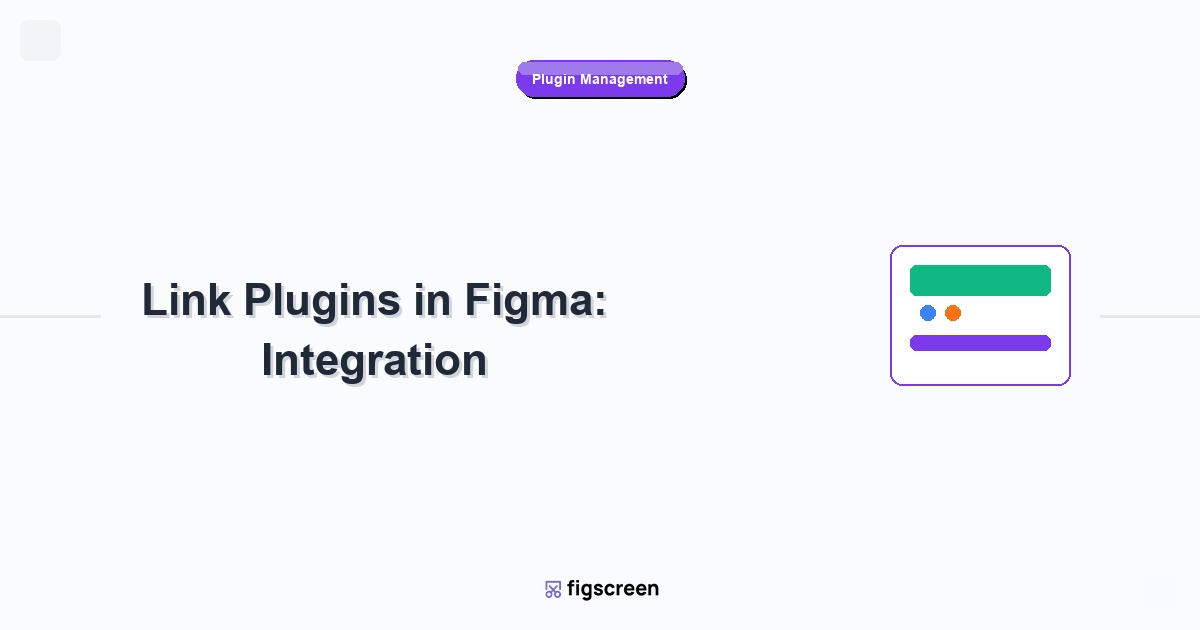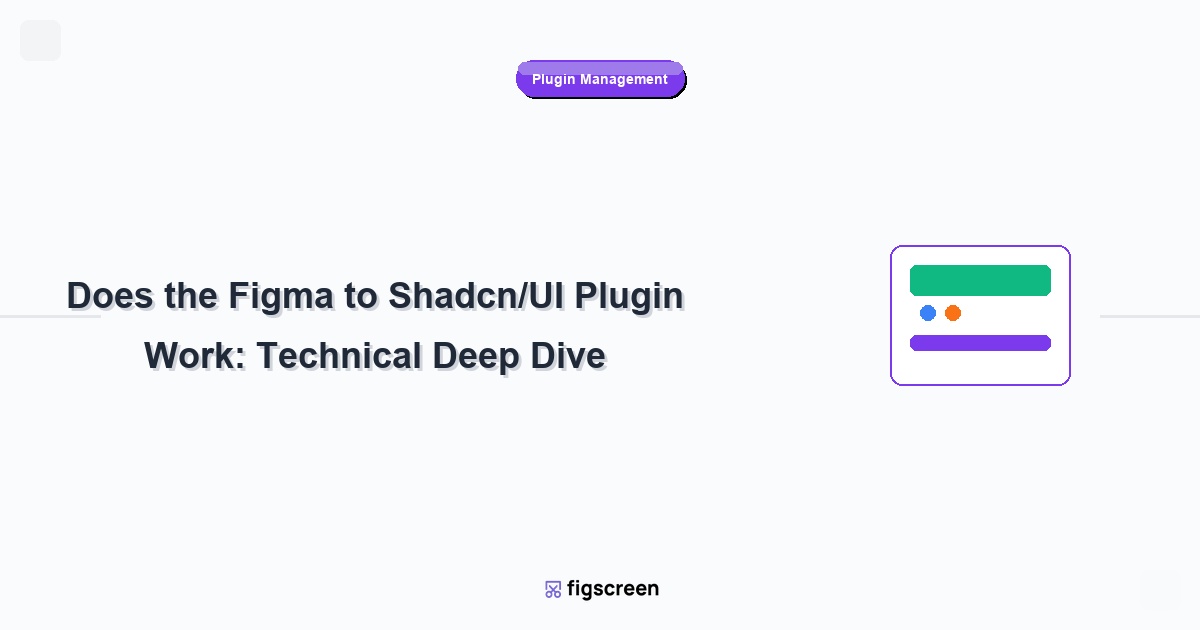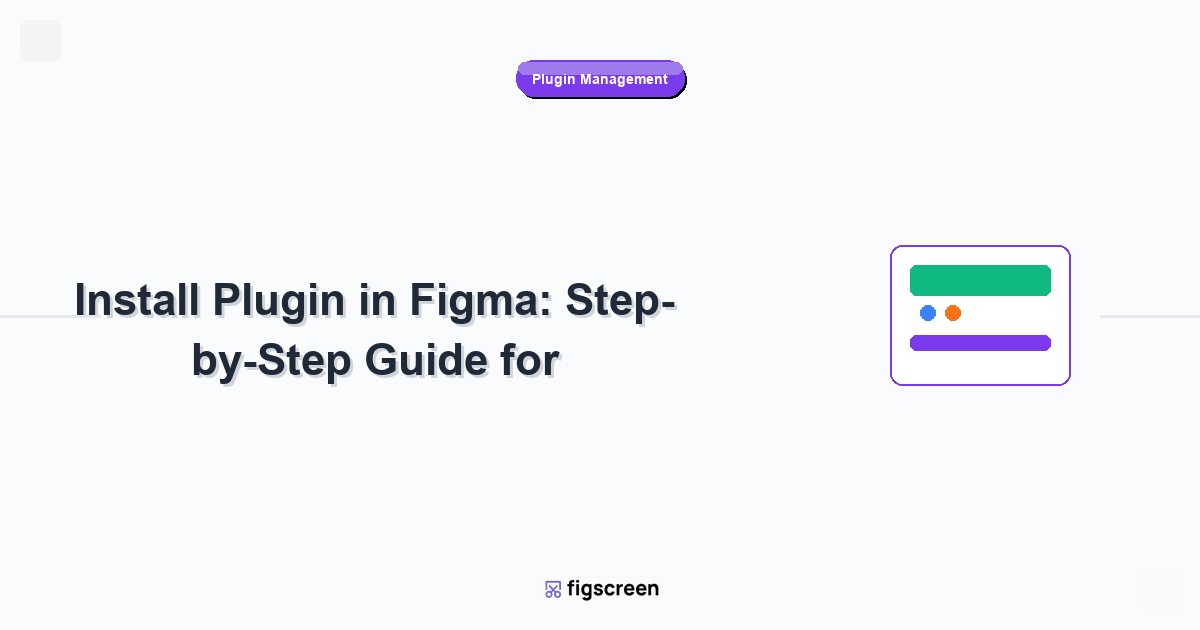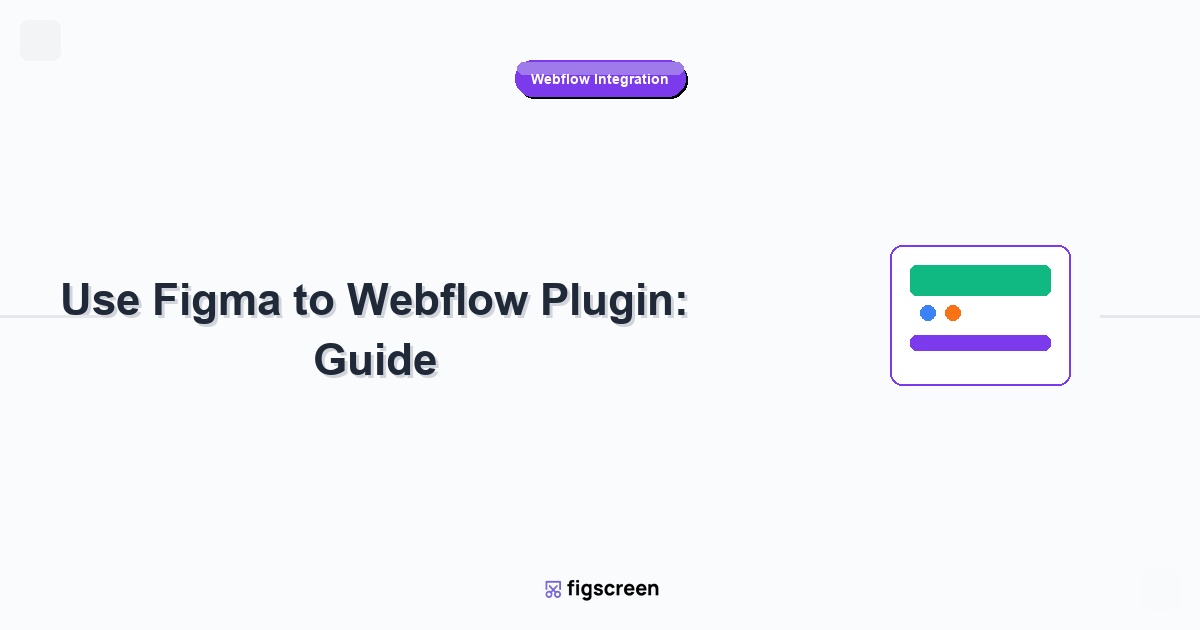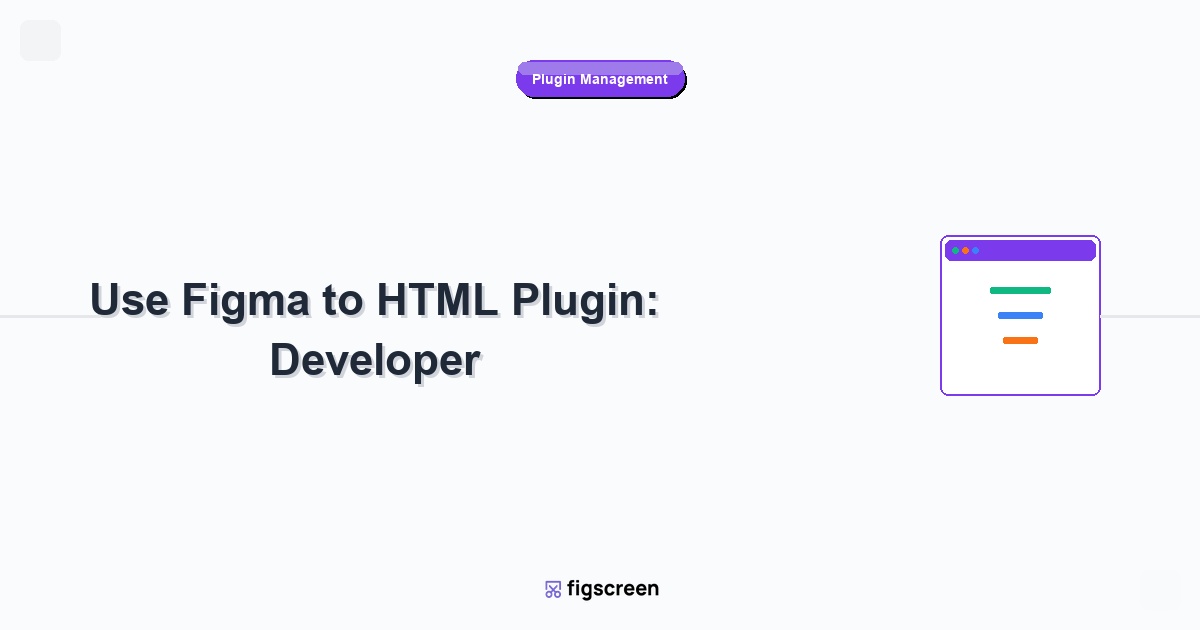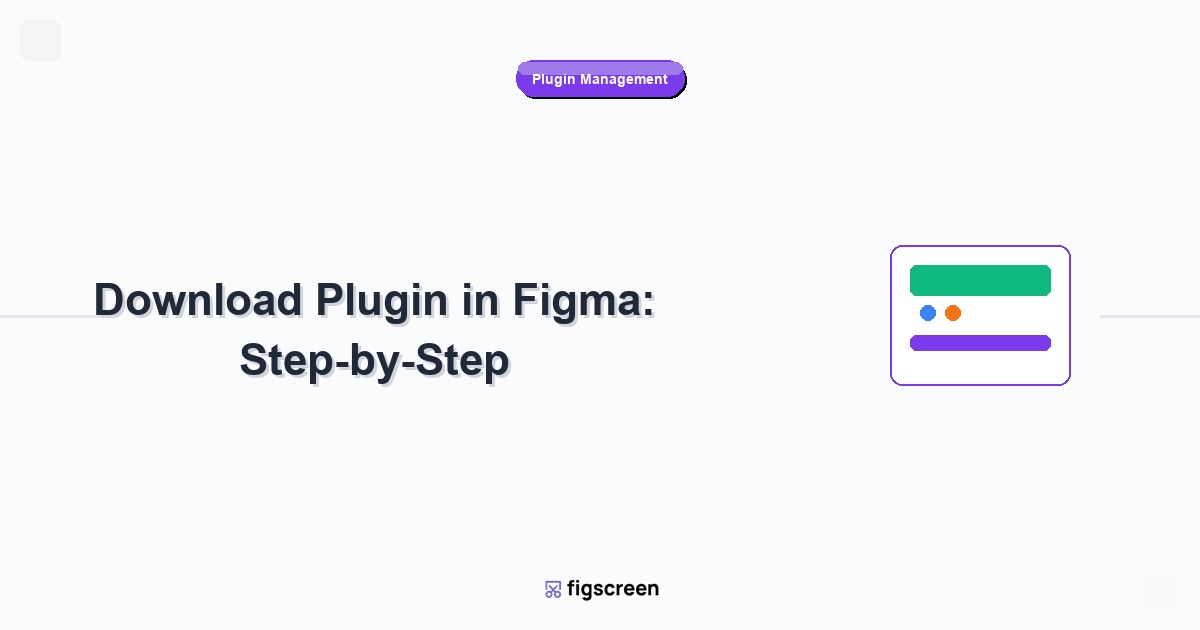Linking plugins in Figma involves creating integrated workflows where multiple plugins work together seamlessly. While Figma doesn’t offer native plugin-to-plugin communication, there are several strategies to create connected workflows that maximize efficiency and automate complex design processes. This guide explores various methods to link plugins effectively in 2025.
Understanding Plugin Linking Concepts
What “Linking Plugins” Means
Plugin linking in Figma can refer to several different concepts:
- Sequential Workflows – Using multiple plugins in a specific order
- Data Sharing – Passing information between plugins through Figma elements
- External Integrations – Connecting plugins to the same external services
- Complementary Functions – Using plugins that enhance each other’s capabilities
Current Plugin Architecture Limitations
Understanding Figma’s plugin system constraints:
- Sandbox Environment – Plugins run in isolated environments
- No Direct Communication – Plugins cannot directly communicate with each other
- Shared Data via Figma – Information must pass through Figma’s design elements
- External Service Bridges – Third-party services can connect multiple plugins
Methods to Link Plugins Effectively
Method 1: Sequential Plugin Workflows
Create linked workflows by using plugins in sequence:
- Plan Your Sequence – Map out which plugins to use in order
- Prepare Base Content – Set up initial design elements
- Run First Plugin – Execute the first plugin in your sequence
- Process Output – Review and adjust the first plugin’s output
- Run Subsequent Plugins – Continue with remaining plugins in order
- Refine Results – Make final adjustments to the linked workflow output
Method 2: Data Bridge Techniques
Use Figma elements as data bridges between plugins:
- Layer Names – Use naming conventions that plugins can read
- Component Properties – Store data in component properties
- Text Layers – Use hidden text layers for data storage
- Frame Structures – Organize frames in ways plugins can interpret
Method 3: External Service Integration
Connect plugins through external platforms:
- Identify Common Services – Find services that multiple plugins support
- Set Up Accounts – Create accounts on shared platforms
- Configure Plugin Connections – Connect each plugin to the external service
- Create Shared Workspaces – Set up shared projects or folders
- Test Data Flow – Verify information passes between plugins correctly
Popular Plugin Linking Scenarios
Design System + Code Generation Linking
Connect design system tools with code generation plugins:
- Design Tokens – Use Figma Tokens to generate tokens, then apply with code plugins
- Component Libraries – Create components, then convert to code with generation plugins
- Style Guides – Generate documentation that informs code generation settings
Content + Design Automation Linking
Link content generation with design automation:
- Generate Content – Use Content Reel or similar for realistic content
- Apply Layouts – Use Auto Layout plugins to organize content
- Optimize Spacing – Apply spacing plugins for consistent layouts
- Generate Variations – Create multiple versions with different plugins
Research + Prototyping Linking
Connect research tools with prototyping plugins:
- Screenshot Collection – Use Figscreen to gather research images
- Analysis Tools – Apply design analysis plugins to screenshots
- Wireframe Creation – Use wireframing plugins based on research
- Interactive Prototypes – Convert wireframes to interactive prototypes
Creating Efficient Plugin Workflows
Workflow Planning Strategies
Plan linked plugin workflows effectively:
- Map Dependencies – Identify which plugins depend on others’ output
- Identify Bottlenecks – Find potential workflow slowdowns
- Plan Error Handling – Prepare for when plugins don’t work as expected
- Document Process – Write down your linked workflow steps
Optimizing Plugin Sequences
Make your linked workflows more efficient:
- Minimize Switching – Group similar plugin operations together
- Batch Operations – Process multiple elements simultaneously when possible
- Cache Intermediate Results – Save progress at key workflow points
- Use Keyboard Shortcuts – Speed up plugin switching with shortcuts
Advanced Plugin Integration Techniques
API-Based Plugin Connections
For plugins that support external APIs:
- Shared API Services – Use services like Zapier or Make.com to connect plugins
- Webhook Integration – Set up webhooks to trigger plugin actions
- Database Connections – Use shared databases to pass information
- Cloud Storage Linking – Share files through cloud storage services
Template-Based Linking
Create templates that facilitate plugin connections:
- Design Linked Templates – Create files optimized for multiple plugins
- Standardize Naming – Use consistent naming conventions
- Pre-configure Layouts – Set up frames and structures plugins expect
- Document Template Usage – Provide instructions for template-based workflows
Team-Based Plugin Linking
Coordinate plugin workflows across team members:
- Shared Plugin Sets – Ensure team uses compatible plugin versions
- Workflow Documentation – Create team guides for linked plugin usage
- Role-Based Workflows – Assign specific plugin sequences to team roles
- Quality Checkpoints – Build review stages into linked workflows
Troubleshooting Plugin Linking Issues
Common Connection Problems
Resolve typical plugin linking challenges:
- Data Format Mismatches – Ensure plugins can read each other’s output formats
- Version Incompatibilities – Keep plugins updated to compatible versions
- Performance Issues – Monitor system resources when running multiple plugins
- Authentication Conflicts – Manage different login requirements for external services
Workflow Debugging Strategies
Debug linked plugin workflows effectively:
- Test Individual Plugins – Verify each plugin works alone
- Isolate Problem Steps – Identify which plugin interaction fails
- Check Data Integrity – Verify data passes correctly between steps
- Review Plugin Logs – Check for error messages or warnings
Best Practices for Plugin Linking
Performance Optimization
Maintain good performance with linked plugins:
- Close Unused Plugins – Don’t keep all plugins open simultaneously
- Process in Batches – Work on smaller sets of elements at a time
- Monitor Memory Usage – Watch for memory consumption spikes
- Save Frequently – Prevent work loss from performance issues
Data Management
Handle data effectively in linked workflows:
- Version Control – Track changes made by different plugins
- Backup Critical Steps – Save copies before major plugin operations
- Standardize Formats – Use consistent data formats across workflows
- Document Dependencies – Record what data each plugin requires
Security Considerations
Maintain security when linking plugins:
- Review Permissions – Understand what data each plugin accesses
- Secure External Connections – Use secure authentication for external services
- Limit Data Sharing – Only share necessary information between plugins
- Regular Security Audits – Periodically review plugin permissions and connections
Specific Plugin Linking Examples
Content + Layout + Export Workflow
A practical linked workflow example:
- Content Reel – Generate realistic text and images
- Auto Layout – Organize content with responsive layouts
- Figma to HTML – Export layouts as functional web code
- Optimization Check – Verify output with accessibility plugins
Design System + Documentation + Code Workflow
Advanced design system linking:
- Design Tokens Plugin – Define and manage design tokens
- Component Documentation – Generate component documentation
- Code Generation – Convert components to React/Vue code
- Style Guide Export – Create comprehensive style guides
Future of Plugin Linking
Emerging Technologies
Technologies that may improve plugin linking:
- Plugin APIs – More robust inter-plugin communication
- Workflow Automation – Built-in workflow management tools
- AI Integration – Intelligent workflow optimization
- Better External Integrations – Improved third-party service connections
Community Developments
Community-driven improvements to expect:
- Plugin Ecosystems – Coordinated plugin development
- Workflow Templates – Shared workflow configurations
- Integration Standards – Common practices for plugin compatibility
- Collaborative Tools – Better team workflow management
Tools and Resources for Plugin Linking
External Automation Tools
Third-party tools that can help link plugins:
- Zapier – Connect plugins through automated workflows
- Make.com (Integromat) – Complex automation scenarios
- IFTTT – Simple trigger-based automation
- Microsoft Power Automate – Enterprise workflow automation
Documentation and Planning Tools
Tools to help plan and document linked workflows:
- Flowchart Tools – Visualize plugin workflow sequences
- Documentation Platforms – Document workflow procedures
- Project Management Tools – Track workflow development
- Version Control – Track workflow changes over time
Conclusion
While Figma doesn’t offer native plugin-to-plugin communication, creative linking strategies can create powerful, automated workflows. By understanding plugin capabilities, planning sequences carefully, and leveraging external services when appropriate, you can build sophisticated design processes that combine the strengths of multiple plugins.
Success with plugin linking requires patience, experimentation, and careful attention to workflow optimization. Start with simple two-plugin sequences, then gradually build more complex linked workflows as you gain experience and confidence with the techniques.
Build Better Plugin Workflows
Figscreen integrates seamlessly with your existing plugin workflows, providing the screenshot foundation that other plugins can build upon. Start linking with confidence.
